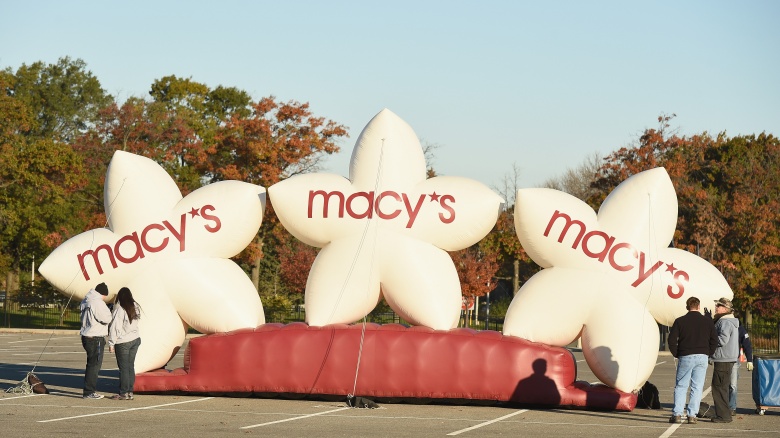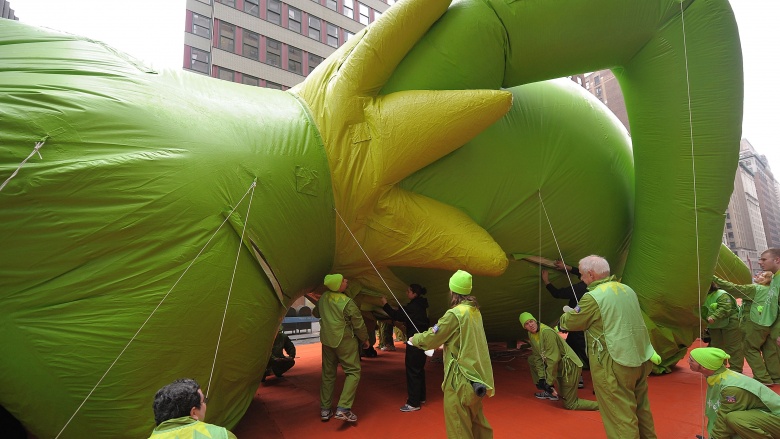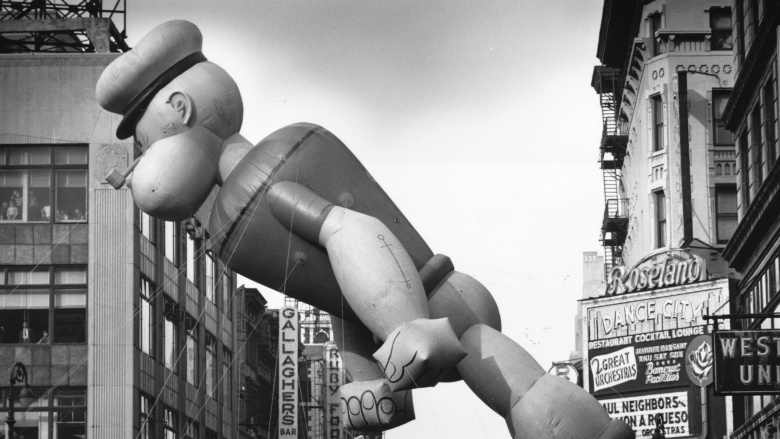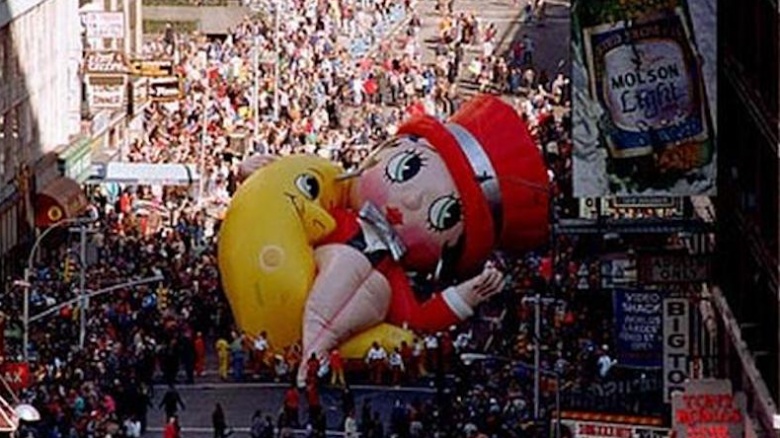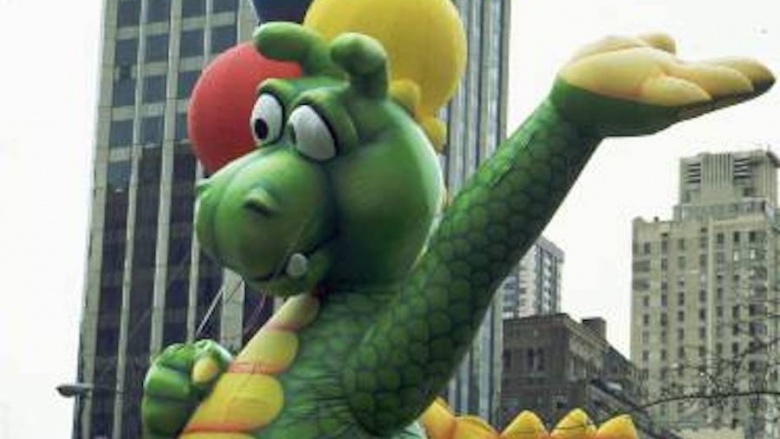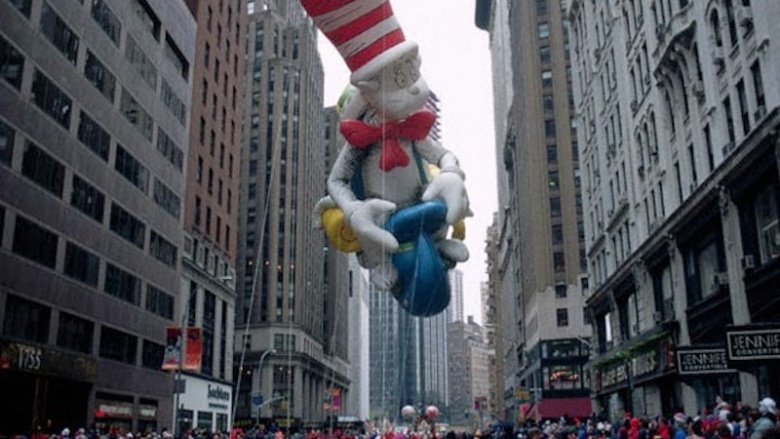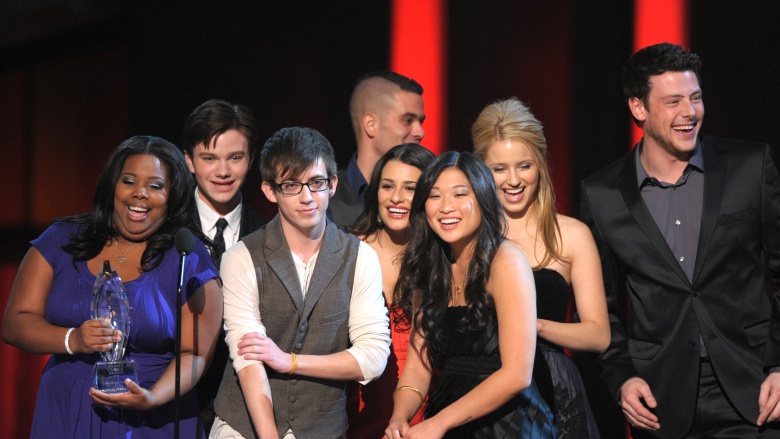The Untold Truth Of The Macy's Thanksgiving Day Parade
It's a holiday tradition: Each year, millions of people watch the Macy's Thanksgiving Day Parade live from New York City as they cook the big holiday meal, or wait for guests to arrive, or kill time waiting for the Lions to lose. The floats, giant cartoon character balloons, marching bands, Broadway performances, and the first public holiday appearance by Santa Claus, have combined to create a Thanksgiving event rivaled only by the turkey itself. Here's a look inside the origins, business, and darker moments in the parade's storied history.
It used to be the Macy's Christmas Parade
Do you feel like the Christmas shopping season starts earlier and earlier every year, and has threatened to swallow the standalone holiday of Thanksgiving in the process, as more and more retailers start their day-after-Thanksgiving sales on Thanksgiving itself? Well, one could argue that this "war on Thanksgiving" started more than nine decades ago.
The first entry in this holiday tradition, which took place on Thanksgiving Day in 1924, was called the Macy's Christmas Parade, and was conceived entirely to promote Macy's at the beginning of the holiday shopping season. Employees of the huge department store chain dressed up in Christmas costumes and marched through Manhattan, ending up at Macy's flagship Herald Square store. It included floats, entertainers and, of course, Santa Claus at the very end. There were, however, no balloons. The showstoppers that year were animals on loan from the Central Park Zoo, including monkeys, bears, camels, and elephants.
NBC has the TV rights, but CBS can air it because of a legal loophole
The parade aired on TV for the time time in 1948, on NBC. The network still holds the official broadcast rights to the parade, more than 60 years later, because why would anybody give that up? However, CBS broadcasts the parade, too, and legally so. Basically, because the parade takes place in public, on the streets of Manhattan, literally anybody can air it, even your local public access channel that nobody watches. However, only NBC has the right to call it the "Macy's Thanksgiving Day Parade," so it's presented by CBS under the generic Thanksgiving Day Parade.
The dangerous business of balloon deflation
In the early years of the parade, the used-up balloons were released into the sky, where they would eventually pop. In 1929, Macy's balloon designers began installing safety valves on the balloons, so at the end of the parade, balloon operators would open the valves, allowing the balloons to slowly do away with the helium inside. They'd then float around the New York area for a few days, and would land wherever.
The balloons were also outfitted with return address labels—anybody who found one could return it to Macy's and they'd get a finder's fee of sorts, such as Macy's merchandise or cash. This contest ended after the 1932 parade, when a deflating balloon floated too far up in the air and wrapped around an airplane in flight. The pilot was sent into a tailspin over Queens, but thankfully landed safety. Forget cash — surviving is the greatest prize of them all.
When the balloons soaked parade watchers
New York City in late November is cold. It's even more uncomfortably chilly when a balloon dumps hundreds of gallons of near-freezing rainwater onto parade spectators. This happened in 1957, when a ton of heavy rain settled into Popeye The Sailor Balloon's hat, which was designed in such a way that it was concave. The unexpected weight of the water in the hat made the balloon much harder for handlers to control, and the balloon veered off course and tipped over, spilling tons of water onto the crowd.
While the hat was redesigned for the '58 parade to prevent the same thing from happening again ... it happened again. With the balloon version of another cartoon sailor wearing a sailor hat. In 1962, it rained heavily once more, and that cold water settled in Donald Duck's concave sailor hat. And once more, it spilled out onto the assembled masses. If sailors have to deal with treacherous waters, so do you.
The disastrous parade of 1986
While the sheer volume of people and objects involved in the parade exponentially increases the chances of something going wrong, most parades go off without much of a hitch. However, it seems like everything that could've gone wrong during the 1986 parade, did. Multiple balloons crashed and/or spontaneously self-destructed that year. Among them: The Raggedy Ann balloon crashed into a lamppost. The balloon survived—but part of the lamppost was knocked off and fell to the ground. Somehow, nobody was injured.
Superman's weaknesses are both Kryptonite and, apparently, trees. the Superman balloon in the Macy's parade got caught on a tall tree ... and it tore right off.
Right before it reached the end of the parade, the Betty Boop balloon crashed into the ground
The Olive Oyl balloon had most of its left arm ripped off, except for two "grotesque fragments." Popeye was too busy gathering a fresh batch of ice-cold water to dump on spectators to help his lady love, presumably.
When wind killed a dinosaur and a hedgehog
Making his debut in the 1993 parade was Rex the Dinosaur, a balloon made in the image of one of the dinosaurs from the now mostly-forgotten animated movie We're Back! A Dinosaur's Story. He probably didn't win over too many fans with his appearance in the parade. Wind gusts were so intense, they pushed the airy Rex balloon into a street light—which tore its head open in a matter of seconds. It was so early in the parade, and with no way for the float to exit, that Rex completed the parade completely headless.
As if that wasn't traumatic enough for kids, one of them was actually injured by a Sonic the Hedgehog balloon, which fell into a lamppost near Columbus Circle and hurt both a child and a police officer. Maybe Eggman was right to want to destroy Sonic.
When Dudley the Dragon made it rain glass
Yet another giant reptilian balloon met an unfortunate end just two years after Rex's brief parade lifespan. Dudley the Dragon, star of a Canadian kiddie TV series, was at the front of the 1995 parade. And once more, a balloon proved no match for a Columbus Circle lamppost. Part of the fixture punctured poor Dudley, and the impact caused glass in the streetlight to shatter onto the crowd below, like it was rain from Popeye's hat except, you know, sharper and more painful.
Dudley immediately bowed out of the parade. NBC, meanwhile, cut away from the live destruction of the balloon to footage it had shot of a Dudley test flight from a few days earlier.
Why there might be no balloons on a blustery day
While balloons have relatively frequently collided with lampposts and left behind glass showers, broken balloons, and weird images for the people watching the parade at home, an accident at the 1997 Macy's Thanksgiving Day Parade led to permanent changes in parade operations.
Thanksgiving 1997 was particularly windy—a 40 mph gust sent the Cat In The Hat balloon off course and, like its fallen predecessors, into a dreaded lamppost. It did so with such violent impact, the horizontal arm of the lamppost came loose, and fell to the crowd, where it struck 33-year-old Kathleen Caronna. She suffered a near-fatal head injury, and was in a coma for 24 days.
That was the last straw. The next year, parade organizers implemented new weather restrictions: high-flying balloons will not be flown if sustained winds are in excess of 23 mph, or if gusts are worse than 34 mph.
In 2009, the cast of Glee was invited to perform … and then uninvited
One of the hottest shows in the fall of 2009 was the musical dramedy Glee, in which telegenic teenagers (or rather, actors in their 20s playing teenagers) would burst into massive song-and-dance style production numbers set to classic pop and rock hits. As the Macy's Parade always features the casts of big Broadway shows performing on national television, it seems like Glee would be a no-brainer for the parade.
Promoters asked the main cast to perform at the parade ... but then their broadcast partners at NBC canceled the invite. The main reason: probably because Glee aired on the rival Fox network, and was killing NBC's shows in the ratings. They, understandably, didn't want to promote the other guy's show. The cast got to sing at the World Series instead, which is just as much of an honor, and there's much less chance of glass and rogue lampposts ruining everybody's day.

